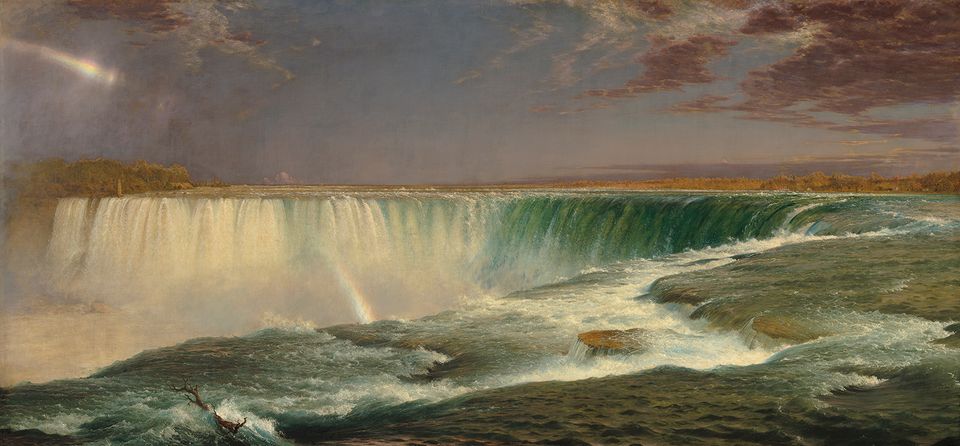
Frederic Edwin Church, Niagara, 1857, oil on canvas, 40 × 90 1/2 in., National Gallery of Art, Corcoran Collection (Museum Purchase, Gallery Fund).
About this Artwork
Church’s Niagara was considered the finest landscape painting of its day. Church experimented with the scale and proportions of his canvas and adjusted his focal point to absorb a wide range of terrestrial and atmospheric phenomena that would convey the range of his travels, observations, and insights. Humboldt saw the panorama format as ideal for “increase[ing] . . . the force of these impressions” from nature. What Humboldt accomplished in writing served as inspiration for what Church would create in paint. One critic termed Church’s Niagara the eighth Wonder of the World. Like the mastodon, Niagara Falls represented an impressive feature often interpreted as a national and cultural icon.













